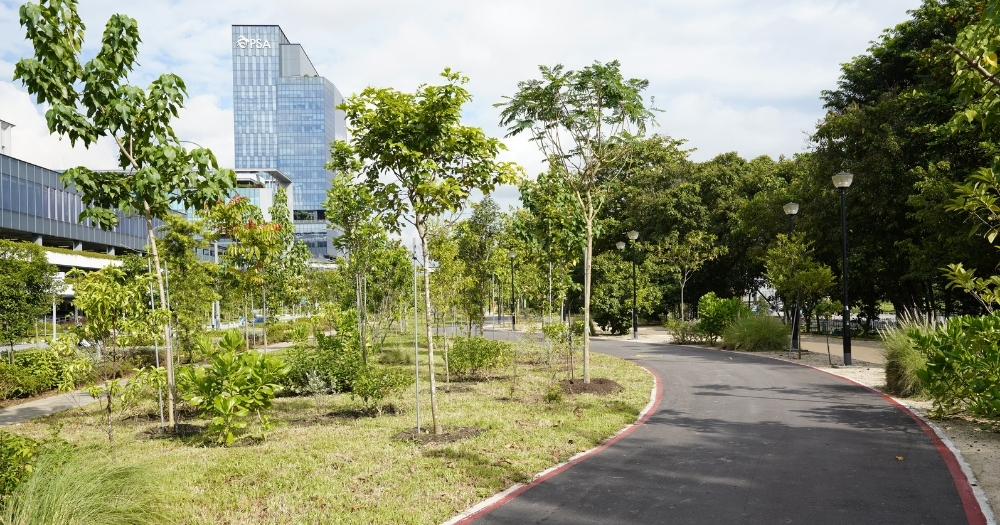Follow us on Telegram for the latest updates: https://t.me/mothershipsg
The first section of the Pasir Panjang Park, from Pasir Panjang MRT station to the Jalan Pelepah residential estate, has opened today (Sep. 4).
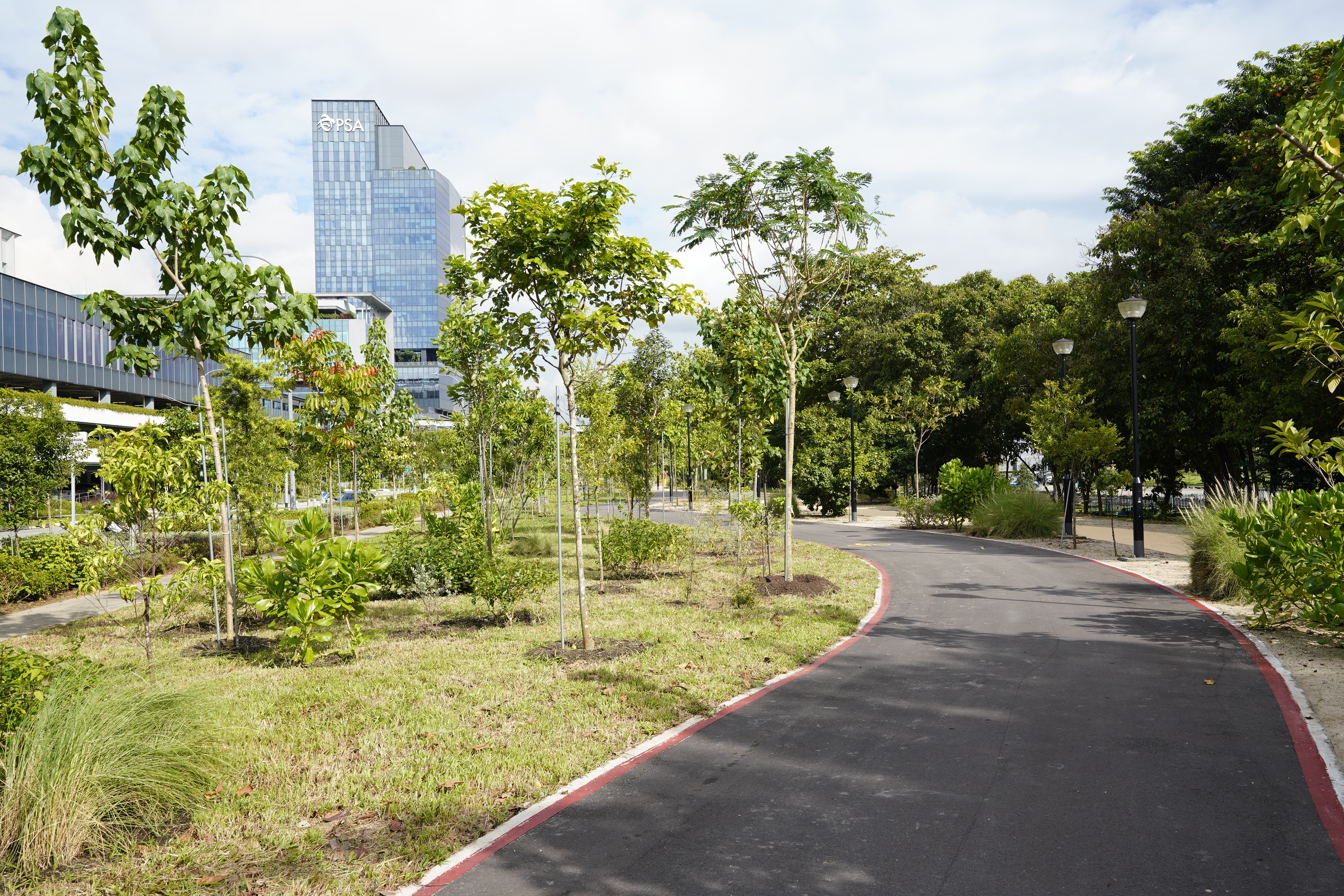 Image courtesy of NParks.
Image courtesy of NParks.
Phase one of Pasir Panjang Park
The park's main feature will focus on natural elements reminiscent of the area's sandy coastline, as suggested by community stakeholders, with plots of sand amid coastal vegetation reintroduced through the planting palette.
The community also revealed a strong preference for self-guided walks, as well as opportunities to learn more about Singapore’s heritage.
The stretch is currently 450m long.
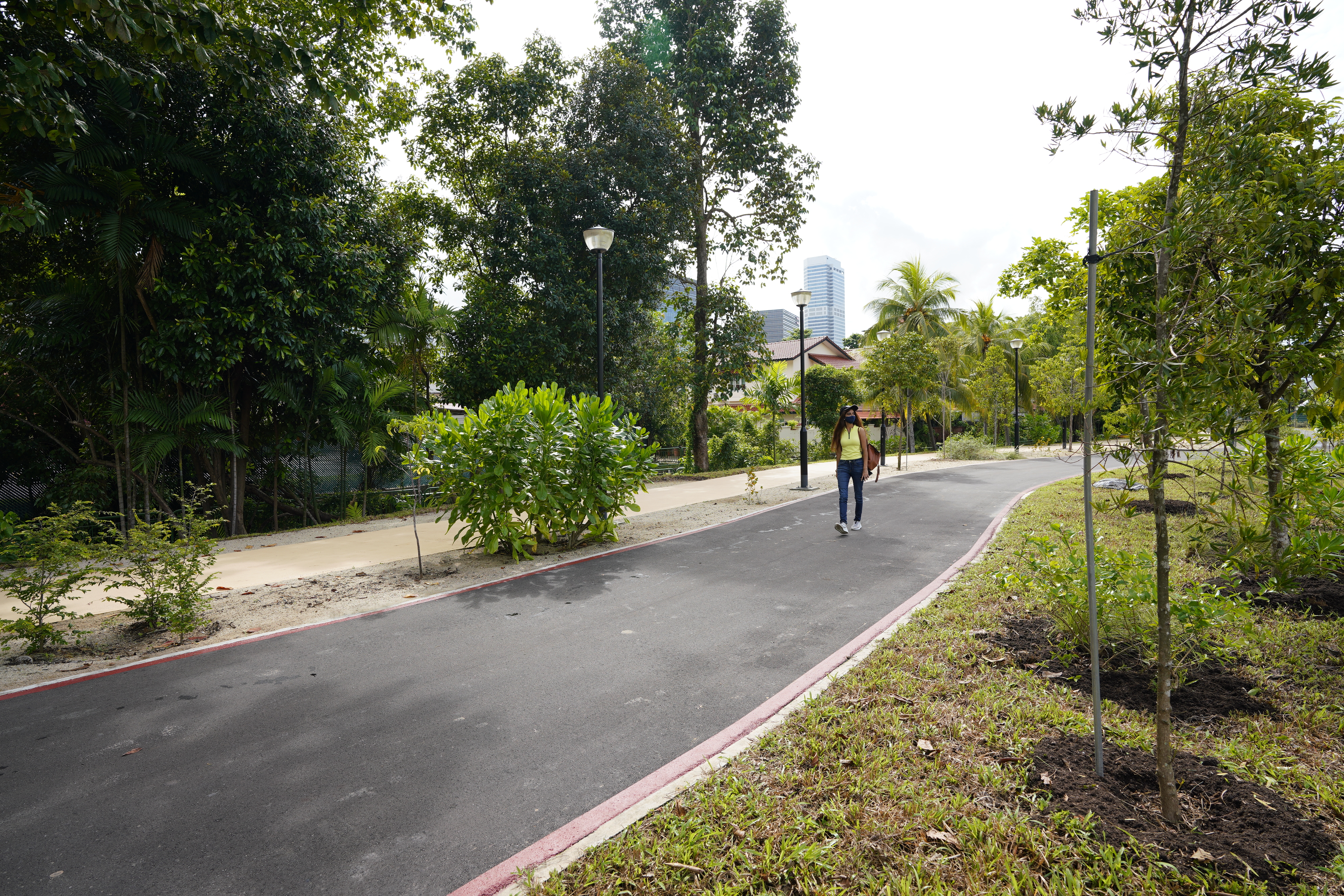 Image courtesy of NParks.
Image courtesy of NParks.
The park's design will include a nature play garden, accessibility features, and signs for the public to find their way.
Additionally, maritime artefacts, such as the horn bollards used for mooring at Tanjong Pagar Terminal since 1972, will also be featured in the park to showcase Singapore's port history.
Visitors can also look forward to heritage boards and a heritage gallery, with stories and photos contributed by members of the public to pay tribute to the area's heritage.
To be completed by 2026
The Pasir Panjang Park is the first under the Friends of the Parks Engagement Programme, where NParks worked together with about 170 stakeholders from various nature groups, social groups, industry players, and government agencies, to co-design, implement, and manage the park.
Discussions between these stakeholders and NParks ran between Jan. 18, 2020 to May 31, 2020, where both parties were jointly engaged to plan, and create Pasir Panjang Park together.
Stakeholders will continue to be involved in the ongoing works for the second phase of the park through activities such as community plant propagating sessions and designing the park's signages.
The park is expected to be completed by 2026.
West Coast plan
NParks also unveiled that the West Coast area of Singapore will be greened by 2030 through four key strategies:
- Nature-based amenities
- Nature ways (strengthening connectivity)
- Infrastructure greening
- Mitigating urban heat island effect
Nature based amenities
NParks said that more nature-based amenities will be created in the west.
This includes more allotment gardens in parklands, and up to 30 new gardening spaces – comprising community and allotment gardens – will be created in the heartland areas in the west.
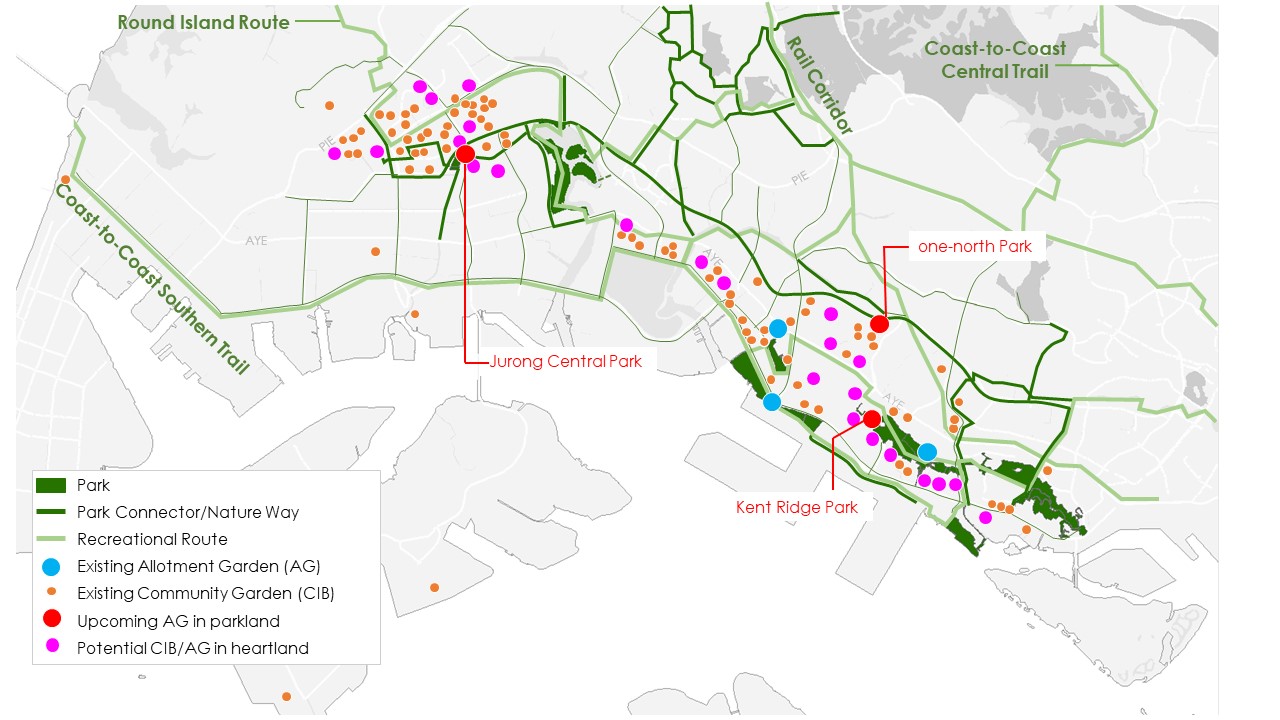 Image courtesy of NParks.
Image courtesy of NParks.
There will also be a corridor gardening initiative to encourage residents to grow their own edibles right at their doorstep.
NParks said that there will be two new therapeutic gardens in Jurong Central Park and West Coast Park.
Additionally, 24 community care facilities have been identified to potentially introduce new therapeutic horticulture nodes, and create a network of therapeutic horticulture features in the area.
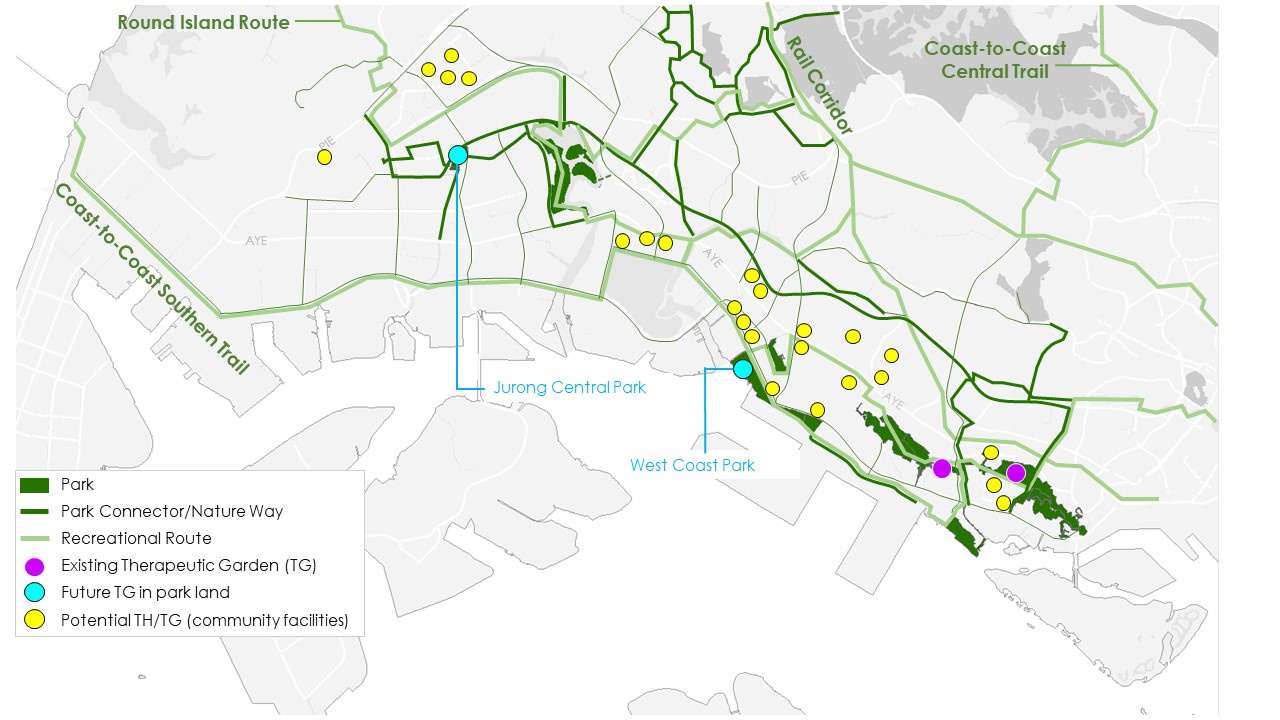 Image courtesy of NParks.
Image courtesy of NParks.
There are also plans for nature play gardens, which has components designed for children with special needs.
In total, almost 40 new nature-based amenities will be added to the area by 2030.
Nature ways
More than ten nature ways will be implemented, with six of them to be planted up over the next two years.
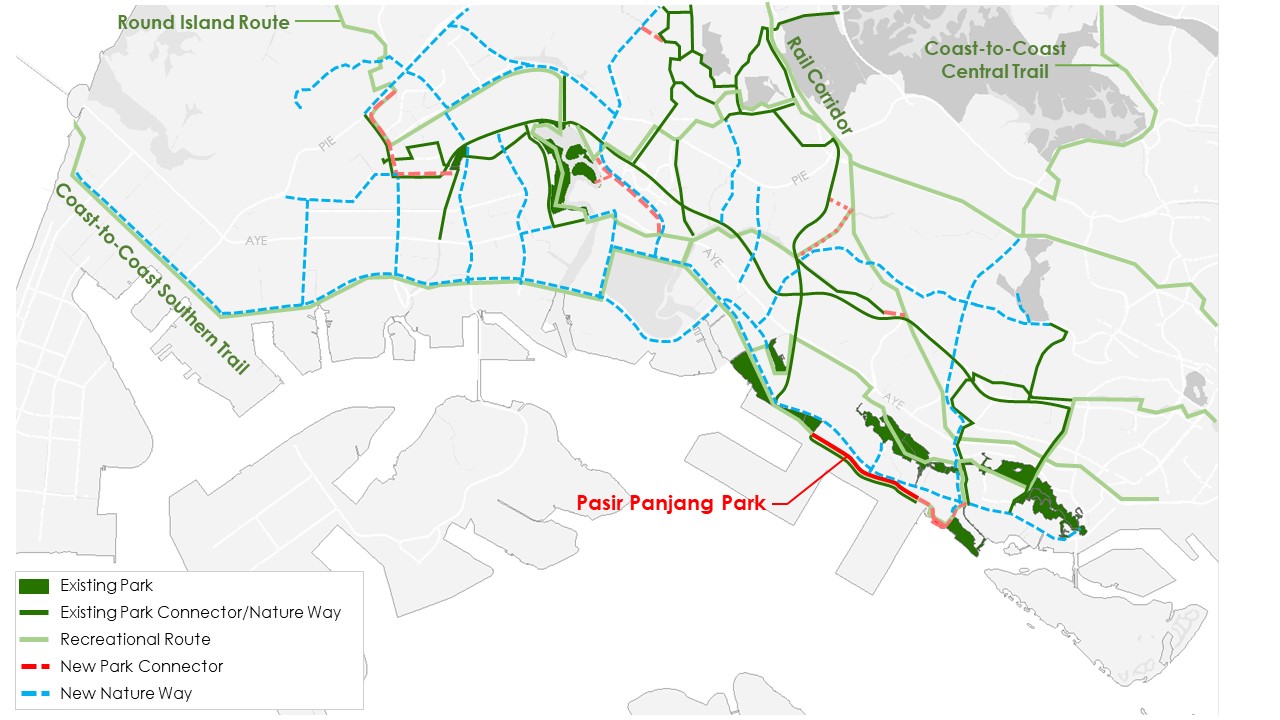 Image courtesy of NParks.
Image courtesy of NParks.
The series of new nature ways will form a West Coast green corridor that connects local ecology between Labrador, Jurong, Sungei Buloh, and the rest of Singapore.
Native coastal and/or back mangal species will be planted along the West Coast green corridor to create a beachfront to coastal forest landscape.
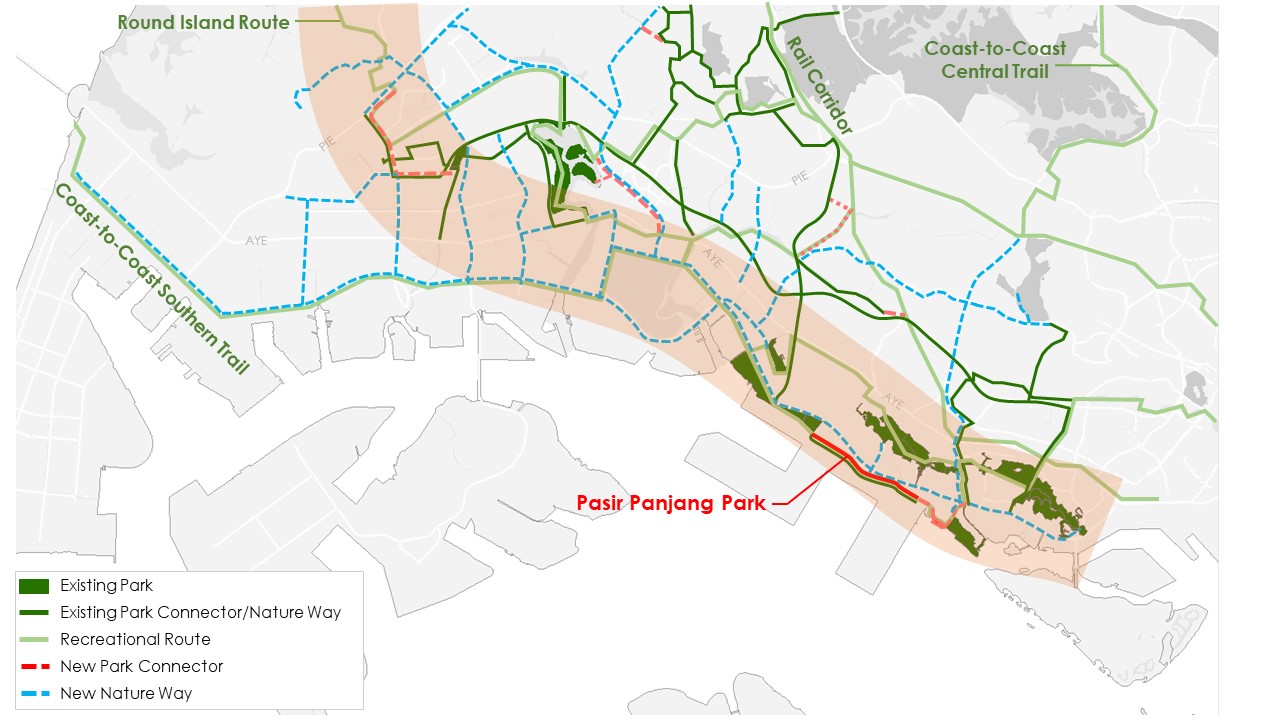 Image courtesy of NParks.
Image courtesy of NParks.
To further support islandwide ecological connectivity, 14 rewilding sites in the west will be enhanced with native trees and plants that support our local biodiversity.
These sites are near nature and rustic areas, Southern Ridges and the Rail Corridor, such as away from residential areas.
NParks said that the rewilding sites will be left to grow wild with minimal maintenance to promote sustainable landscape.
Recreational routes, such as the Coast-to-Coast Southern Trail and the Round-Island-Route will also be developed progressively.
Infrastructure greening
NParks said that the greenery at the upcoming Jurong Region Line (JRL) stations will be enhanced in three different stages over the next ten years.
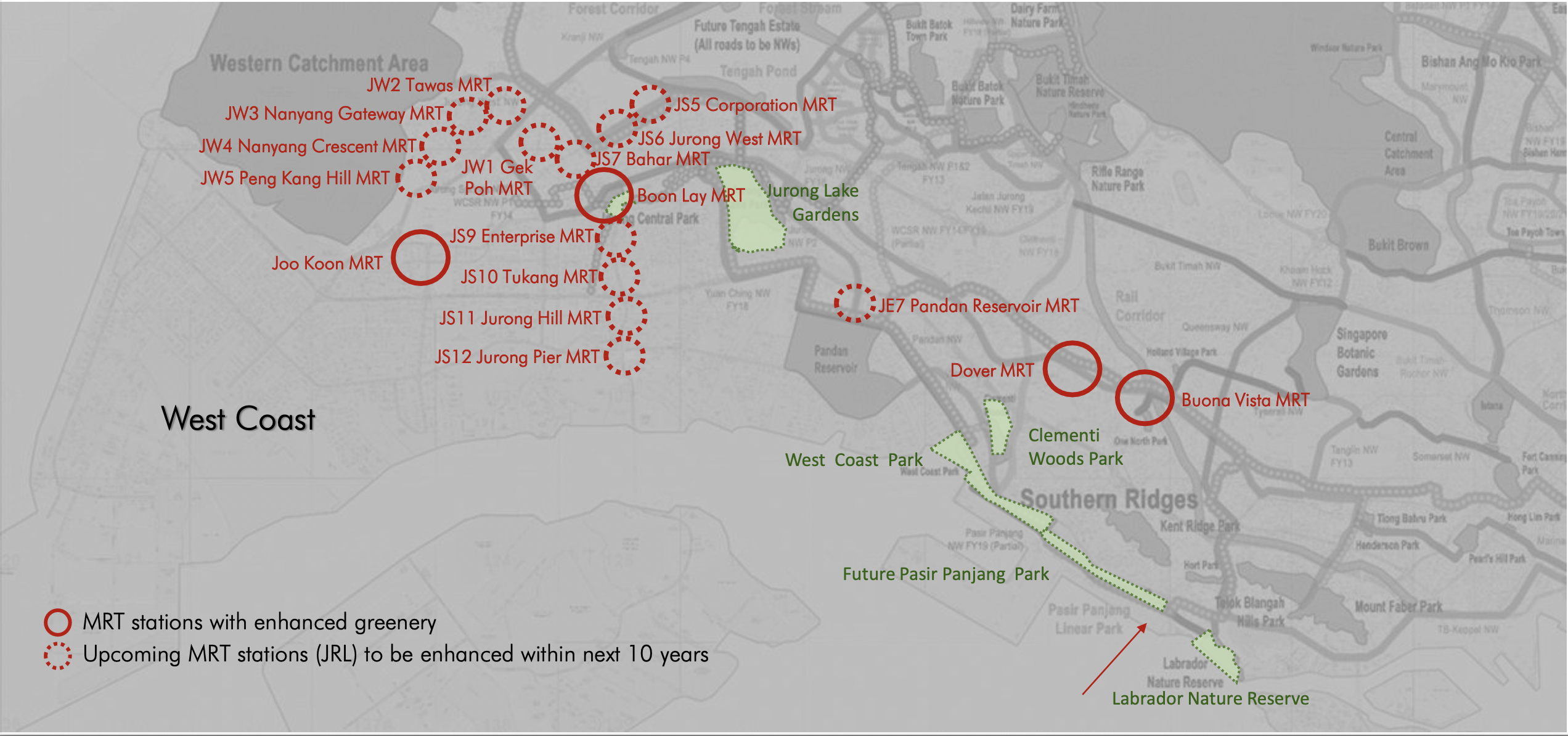 Image courtesy of NParks.
Image courtesy of NParks.
Mitigating urban heat island effect
In addition, greenery within major industrial estates, such as Jurong Industrial Estate, Tuas Industrial Estate, Jurong Island and Jurong Innovation District, will be intensified.
This will be achieved by planting 150,000 additional trees in Jurong Industrial Estates by 2030, which aims to cool these areas and mitigate the urban heat island effect.
A network of pedestrian-level sensors will also be deployed at Jurong Estate and Jurong Island to measure thermal comfort, assess and review the effectiveness of greenery in mitigating urban heat island effect, and support research projects on this topic.
Related stories:
Top image via NParks
If you like what you read, follow us on Facebook, Instagram, Twitter and Telegram to get the latest updates.
